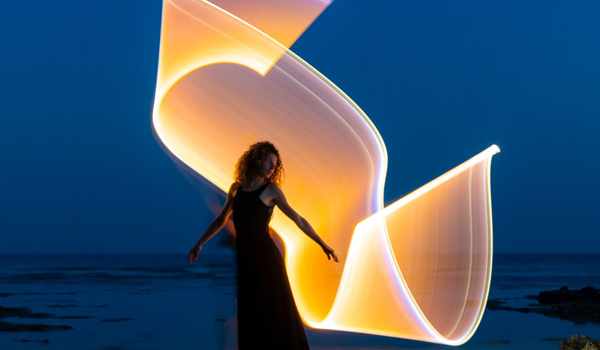What is light painting? Light painting is a fascinating photography technique that involves using a moving light source to “paint” within a scene while capturing a long exposure photograph. Unlike traditional photography, where the focus is often on capturing a single moment in time, light painting allows photographers to create dynamic and unique images that blend light, motion, and creativity. This technique opens up a world of artistic possibilities, enabling photographers to produce stunning visuals that are as much about the process as they are about the final image.
The key to successful light painting lies in controlling the exposure and movement within the frame. By using long exposure times, typically ranging from a few seconds to several minutes, the camera sensor captures the entire path of the moving light source, resulting in trails of light that form shapes, patterns, or even complex images. This technique can be used in various settings, from pitch-black rooms to outdoor night scenes, offering endless creative opportunities.
Whether you’re a beginner or an experienced photographer, understanding the basics of light painting can transform your approach to photography. It’s not just about capturing light; it’s about crafting a scene, experimenting with different light sources, and embracing the unpredictability that comes with this artistic method.
Techniques in Light Painting
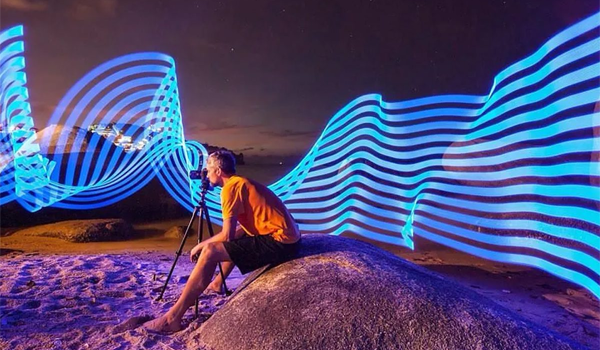
To truly master light painting, it’s important to explore the various techniques available, each of which can yield vastly different results. From basic methods suitable for beginners to advanced approaches that require precision and practice, the techniques in light painting are as varied as they are exciting.
Basic Techniques
For those new to light painting, starting with basic techniques is essential to building a strong foundation. One of the simplest and most popular methods is light drawing, where you use a small light source, such as a flashlight, to “draw” shapes, words, or patterns in the air. The key here is to keep the light moving steadily to create smooth, continuous lines in your final image.
Another fundamental technique is illuminating objects, where you selectively light specific areas of a scene during a long exposure. This method is particularly effective in dark environments, allowing you to highlight parts of the scene while leaving the rest in shadow, creating a dramatic contrast. Beginners are encouraged to experiment with different light sources and movements to discover the unique effects each can produce.
Advanced Methods
As you gain confidence with the basics, you can explore more advanced light painting methods that push the boundaries of creativity. One such technique is kinetic light painting, which involves moving the camera itself rather than the light source. By rotating or zooming the camera during a long exposure, you can create abstract patterns and distortions that add a dynamic element to your images.
Another sophisticated approach is steel wool spinning, where burning steel wool is spun rapidly to create a shower of sparks. This method requires caution and proper safety measures but can result in spectacular visuals that are both powerful and mesmerizing. Additionally, the use of light stencils and physiograms—circular patterns created by swinging a light source attached to a string—can add further complexity and artistry to your light painting repertoire.
Mastering these techniques takes time and practice, but the results are well worth the effort, allowing you to create truly one-of-a-kind images that stand out in the world of photography.
Tools and Equipment for Light Painting
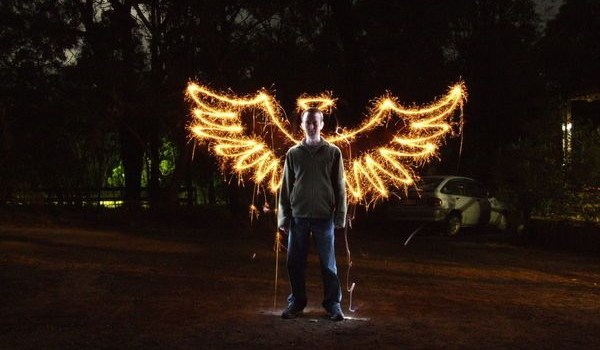
To achieve stunning results in light painting, it’s crucial to have the right tools and equipment. Each piece of gear plays a specific role in helping you control light, exposure, and the overall composition of your image. Whether you’re just starting or looking to refine your technique, understanding the essential equipment will significantly impact the quality of your light paintings.
From selecting the appropriate camera and lenses to choosing the right light sources, the gear you use will dictate how well you can execute your creative vision. In this section, we’ll explore the must-have tools that will help you capture brilliant light paintings, beginning with cameras and lenses, followed by a deep dive into the various light sources you can utilize.
Cameras and Lenses
When it comes to light painting, the camera and lens you choose are foundational to the success of your image. The ideal camera for light painting is one that allows full manual control, particularly over the shutter speed, ISO, and aperture settings. DSLRs and mirrorless cameras are typically preferred due to their versatility and ability to handle long exposures, which are essential for capturing the extended light trails and effects in light painting.
For beginners, a camera with a Bulb mode is invaluable, as it allows the shutter to remain open for as long as you hold down the shutter release. This gives you the flexibility to experiment with different exposure times, from just a few seconds to several minutes.
In terms of lenses, a wide-angle lens is often favored for light painting, as it can capture a broader scene, making it easier to include all the elements you want to illuminate. However, depending on the effect you’re aiming for, other types of lenses, such as a 50mm prime lens, can also be effective, especially when focusing on specific details within a scene.
Light Sources
The variety of light sources available for light painting is vast, each offering unique possibilities for creativity. Basic options include flashlights, LED lights, and glow sticks, which are great for drawing simple shapes or illuminating objects in a scene. These tools are easy to control and can be used in different ways depending on the desired effect.
For more advanced light painting, you can experiment with specialized tools like fiber optic brushes, light swords, and colored gels, which allow you to introduce different textures and colors into your light paintings. These tools can help create more intricate and varied light trails, enhancing the visual complexity of your images.
Additionally, steel wool is a popular choice among seasoned light painters. When ignited and spun rapidly, steel wool produces a dramatic shower of sparks that can fill your frame with dynamic light patterns. However, this technique should be used with caution, as it involves fire and can be dangerous if not handled properly.
Having the right combination of light sources enables you to push the boundaries of your creativity and produce unique, captivating images that stand out in the realm of photography. In the next section, we’ll explore even more advanced techniques and how to apply them effectively in your light painting projects.
How to Get Started with Light Painting
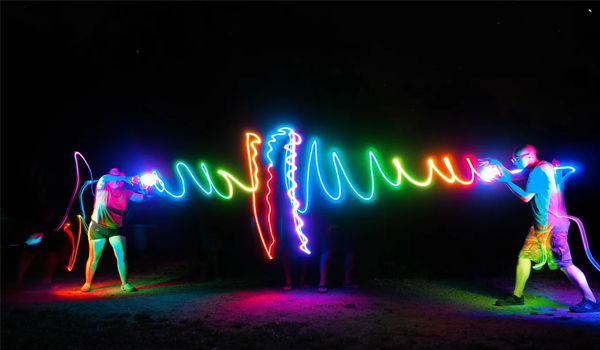
Starting your journey into light painting can be both exciting and challenging. This unique photography technique requires a blend of creativity, technical knowledge, and the right environment to truly shine. Whether you’re a novice or someone looking to refine your skills, getting the basics right is essential to creating compelling light painting images. In this section, we’ll walk you through the initial steps needed to begin your light painting adventure, including how to choose the best location, properly set up your camera, and practice basic light strokes to get comfortable with the process.
Choosing the Right Location
Selecting the right location is a crucial first step in light painting. Ideally, you’ll want to find a spot that is dark enough to allow the light from your tools to stand out clearly in the final image. Urban settings can work, but they often require careful control of ambient light to avoid overexposure. Natural environments, such as secluded fields, forests, or beaches at night, are often preferred due to their low light pollution and wide-open spaces.
When scouting for a location, consider safety and accessibility. It’s important to ensure that the area is safe for moving around in the dark, especially if you’ll be working with tools like steel wool that require extra caution. Additionally, a location with interesting features—such as old buildings, trees, or water bodies—can add depth and context to your light paintings, making them more visually engaging.
Setting Up Your Camera
Proper camera setup is key to successful light painting. Start by mounting your camera on a sturdy tripod to ensure it remains completely still during long exposures. Even the slightest movement can blur your image, so stability is paramount. Next, switch your camera to Manual mode to have full control over settings such as shutter speed, aperture, and ISO.
Set your camera to a low ISO, typically between 100 and 400, to minimize noise. Use a narrow aperture, around f/8 to f/11, to maintain a good depth of field and keep most of your scene in focus. The shutter speed will depend on the amount of ambient light and the duration of your light strokes but start with an exposure time of 15-30 seconds and adjust from there as needed. Don’t forget to turn off image stabilization if your camera is on a tripod, as it can actually introduce unwanted motion.
Practicing Basic Light Strokes
Before diving into complex compositions, it’s essential to practice basic light strokes to understand how different movements affect your images. Begin with simple shapes like circles, lines, and spirals. Use a small flashlight or LED light to draw these shapes in the air while the camera’s shutter is open. This will help you get a feel for how quickly or slowly you need to move the light source to achieve the desired effect.
As you gain confidence, start experimenting with more intricate designs and multiple light sources. Try illuminating objects in your scene or combining different colors of light to add complexity to your images. Reviewing your results after each attempt will help you refine your technique and gradually build up to more advanced light painting styles.
With these foundational skills, you’ll be well on your way to creating stunning light painting images that showcase your artistic vision. In the following sections, we’ll delve deeper into more advanced techniques and tips to help you elevate your light painting photography.
Creative Ideas for Light Painting
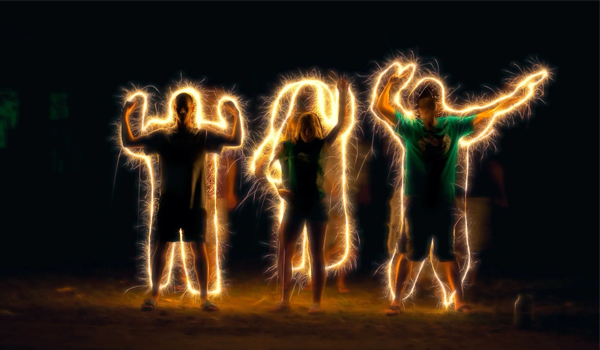
Once you’ve mastered the basics of light painting, it’s time to push the boundaries of your creativity and explore more artistic and imaginative concepts. Light painting is a versatile technique that offers endless possibilities for experimentation, whether you’re interested in abstract designs, dynamic portraits, or other innovative ideas. In this section, we’ll explore two popular creative approaches: abstract light paintings and light painting portraits, each offering a unique way to express your artistic vision through light.
Abstract Light Paintings
Abstract light painting is all about embracing the unpredictability and fluidity of light to create images that are more about emotion and movement than concrete forms. This style of light painting allows you to experiment freely with various light sources and camera movements, resulting in images that are often surreal and visually striking.
One technique commonly used in abstract light painting is kinetic light painting, where the camera itself is moved during a long exposure. By rotating, zooming, or even shaking the camera while the shutter is open, you can create swirling patterns and lines that defy the constraints of traditional photography. Another approach involves using multiple light sources of different colors and intensities, waving them in front of the camera to produce complex, layered effects.
To further enhance the abstract quality, consider incorporating reflective surfaces or prisms into your setup, which can scatter light in unexpected ways and add an additional layer of depth to your images. The beauty of abstract light painting lies in its spontaneity and the unique, often unrepeatable, results that it yields.
Light Painting Portraits
Light painting portraits combine the human form with the dynamic effects of light, resulting in images that are both visually captivating and deeply expressive. This genre of light painting requires a bit more planning and precision compared to abstract work, but the results can be truly spectacular.
To create a light painting portrait, start by positioning your subject in a well-composed scene. You’ll need to carefully control the light, ensuring that the light sources highlight the subject in a way that complements their features while adding an artistic flair. One popular technique is to use light trails around the subject, either by moving lights around them or by having them hold a light source themselves. This can create a halo effect or dynamic lines that follow the contours of the subject’s body.
Another technique involves using colored gels or different light sources to paint specific areas of the portrait, such as the face or hands, with varying hues. This adds an element of mood and can evoke different emotions depending on the color scheme used. Portraits created with light painting often have a mystical or ethereal quality, making them stand out as pieces of art.
By exploring these creative ideas, you can expand your repertoire and develop a distinctive style in your light painting photography. The key is to keep experimenting, pushing the limits of what’s possible with light and shadow, and allowing your imagination to guide your work.
Conclusion
Light painting is a powerful technique that blends photography with artistic expression, allowing you to create images that are as imaginative as they are beautiful. Whether you’re experimenting with abstract forms or crafting stunning portraits, the possibilities with light painting are truly endless. With the right tools, a good understanding of the basics, and a willingness to experiment, anyone can master this unique art form and produce captivating results.
As you continue to explore light painting, remember that practice and creativity are your best allies. Don’t be afraid to try new things, make mistakes, and push the boundaries of your work. Every experiment brings you one step closer to finding your unique style and creating unforgettable images that stand out in the world of photography.

